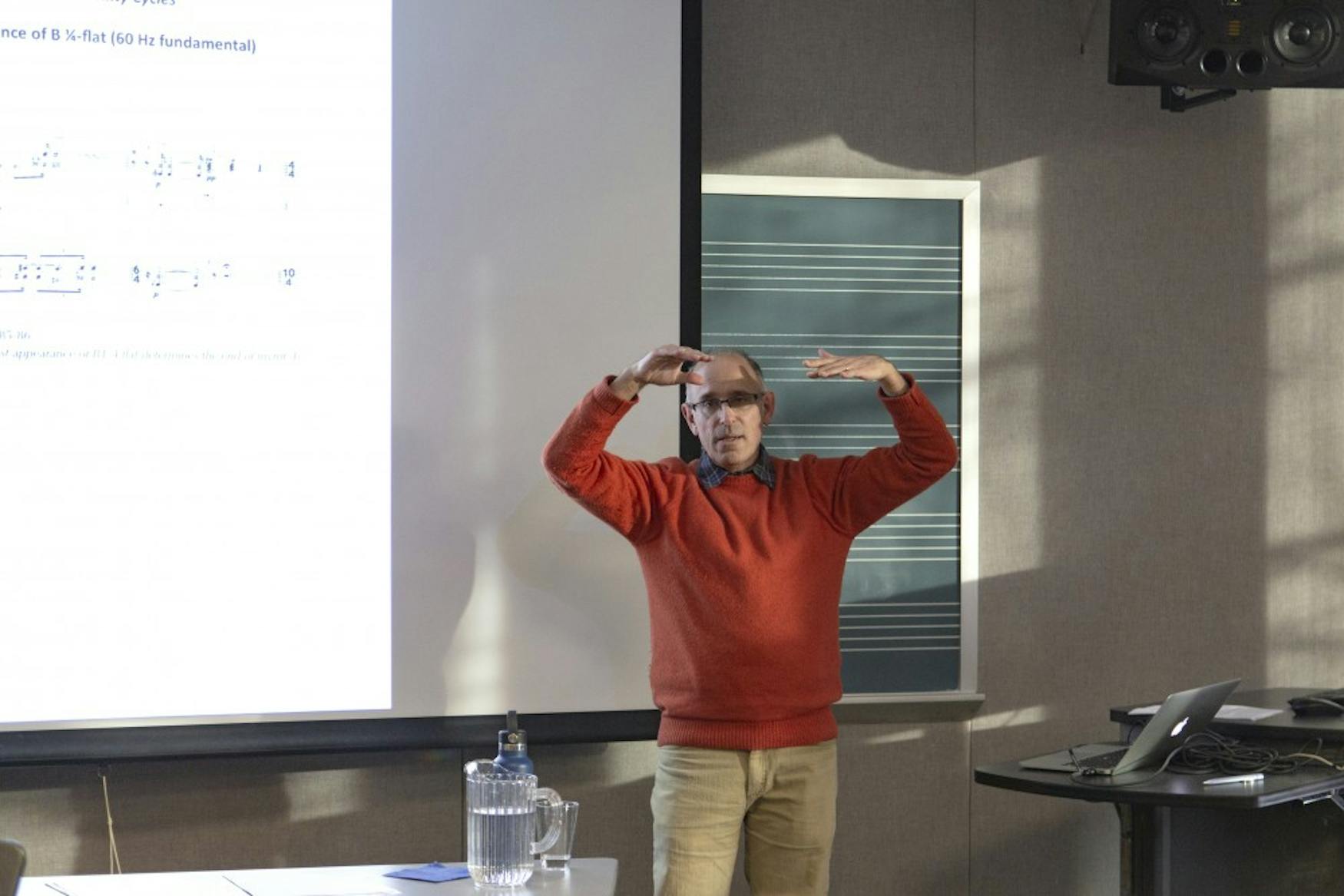Noted critic listens to music
“My composing is inspired by movement and the contemplation of change,” composer Josh Levine began. He presented at the Music department’s composition colloquium, “Metaphors and Musical Means” on March 7 in the Slosberg music center, and music students lent an ear to Levine’s experiences at the Radcliffe Institute for Advanced Studies. Levine shared his fondness for the unity of memory and imagination, thinking about the physicality of musical performance and the way we as listeners identify with it emotionally. However, I was only available to attend the first half of the lecture, during which he discuss his thesis, a recorded flute and piano duet he played for students.
Levine described himself as an “old-fashioned idealist,” a composer who creates music meant to be listened to from beginning to end. He encouraged listeners to listen to his music more than once in the hopes that his pieces will rereveal themselves in different ways. He weaves references throughout his body of work which allude to previous structural or surface-level elements. Levine occasionally references Bach or Beethoven, but usually incorporates previous ideas of his own.
He went on to discuss the relationship between musical ideas and metaphors. Levine explained that the “different structural strata interweave and collide in a network in nature-inspired processes of growth and decay.” When he played varying takes of his piece for the students, there were discussions regarding the altered performances and how different musicians interpreted his work differently. One was faster, harsher on the flute, and one was tighter.
“Sixty Cycles” was the name of Levine’s next piece. He had composed it for a colleague celebrating his sixtieth birthday. Levine’s goal for the piece was to use the phases of life and the frequent disparity between the temporal grids that we use to organize our lives — weeks, months, days — and experiential time. The piece was structured using several different types of musical material which didn’t specifically contrast thematically with each other. He used sixty different “structural zones,” each with the same number of beats as the fixed grid. Each zone varies in time at a specifically perceived speed and density of the material in our mind as well as actual fluctuations in performance. Metaphorical thinking allowed him to express life through the technical means he acquired throughout his professional exposure to music. Through the compositional process, Levine was able to use materials that were effective and sufficiently varied to create works that resonated with his audiences.
The lecture continued with a discussion delving into the process of weaving life experience into music — one doesn’t have to have reached the age of sixty to have something important to say about life by using metaphor in art. Rational and irrational aspects of life can be experienced at any age. They can always be filtered through art in whatever way we see fit.
Though I wasn’t present for half of the lecture, students seemed engaged and hanging on to Levine’s every word. His insight into the use of metaphor in music was inspired and informative.



Please note All comments are eligible for publication in The Justice.